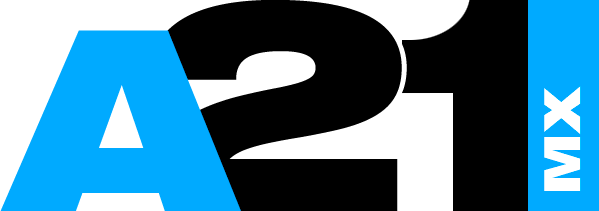
The covid-19 pandemic forced the decrease of air transport operations around the world, causing a reduction in the need for MRO services. Until when could a recovery in this market be seen? Is the pandemic an opportunity for improvement?
Allan Bachan serves as vice president at ICF* specialized aviation digital services and consulting company, as well as being a consulting specialist in MRO and supply chain, accumulating more than 32 years of experience in the aviation industry.
In this exclusive interview with A21, Allan analyzes the current situation of the MRO market in the Latin American region in an industry highly affected by the crisis derived from the health emergency caused by covid-19.
- How have the Latin American MRO workshops been affected by the decrease in flights around the world?
We forecast the Latin American MRO market to have a revenue of $1.5 billion during 2020, about 60% less than in 2019, when it reached $4.7 billion. It is a big difference. Before the pandemic, the original forecast was for the Latin American market to reach $6.3 billion in 2025, but now the forecast is significantly lower.
The MRO market is mainly driven by air traffic, since the use of aircraft, their engines and systems will cause the need for maintenance. But now, with less use of aircraft due to low demand, fewer maintenance services are needed. Airlines will emerge from the crisis with smaller networks and fewer planes, and that will definitely impact jobs and profits.
On the MRO side of the region, they had expansion ambitions. Coopesa planned to double its hangars; Aeroman has just built new hangars and is adding maintenance capacity, so they are getting more staff, equipment and diversifying to different types of fleets; Gol Aerotech, which was launched in November 2019, had planned to generate more than $33 million in business this year, but they surely are nowhere close to achieving it.
- In the aviation industry the recovery is expected to arrive between 2024 and 205, when could we see the recovery of MROs?
The MRO market in 2019 was 4.7 billion and now we are at 1.5 billion. Our forecasts tell us that, in 2024, a maximum of 4 billion will be reached.
We therefore don't expect to see a full MRO recovery before 2026, at best. It's going to take at least six years to reach the levels we had in 2019.
- What aircraft segment has been the most affected?
53% of Latin America's fleet is made up of narrow-body aircraft, 8% wide-body, and the rest is divided between turboprops and regional jets. I would say that all segments of commercial aviation have been affected in the same way. In business aviation it is different, in fact, it has grown because of the increase in people who can afford now to travel more in a private jet.
Helicopters are used to a greater extent for security, defense and surveillance operations, so the demand for services has remained almost the same.
The wide fuselages only represent 8% of the regional fleet and that number will be reduced because long haul travel is less
In Mexico we see a stable presence of MROs, as there is a lot of domestic traffic that will increase. We do not have an exact number in earnings, but we believe that, in terms of volume, it will grow very fast within its region. Aeroméxico has a diverse market. Mexico has always been a tourist destination and we believe that it will recover soon (before business trips) and generate more traffic and more activities for MROs, but that will only be seen until tourism recovers.
There are optimistic signs for Mexico in particular, but what is interesting is the competition that will emerge. We have already seen what happened with Aeroméxico and Interjet. Volaris has recovered its volumes before the other airlines, but we do not know how it will face the storm in economic terms.
- What strategies could help reduce the impact of the crisis?
The first is diversification. Most of the maintenance carried out in Latin America is focused on aircraft checks. Diversifying into components, for example brakes, batteries, things that can be repaired very quickly and easily, as well as offering engine modification and maintenance services. Also, try to become more self-sustaining. We've seen cross border traffic challenging so it will take some time before everyone gets back to where they were. Maintaining sales and diversification are key elements.
The second is collaboration. We encourage further collaboration within the region. For example, have one workshop service all narrow-body aircraft and another those with wide-body aircraft. Collaborating can improve work by building on each other's strengths.
The third is innovation. Adopt digital technologies and strategies that differentiate your offer. One of the problems we see in Latin America is that labor is cheap. For example, Aeroman in El Salvador pays between $10 and $20 dollars per hour, while international rates are around $55 to $75 per hour. That is why Aeroman has become very popular, especially for North American operators. However, even when labor is cheap, there is going to be overcapacity. That is why it is necessary to differentiate your services with the help of technology.
- Is it convenient for airlines to adopt an internal maintenance model?
You can collaborate, innovate, and build self-sufficiency instead of outsourcing, especially in aircraft checks. We are seeing that this has been a trend in the region, it is becoming more independent. However, you must find a balance between increasing your capabilities and collaborating. If you can specialize in one area and another workshop in a different one, it can be more efficient. We encourage you to try to get more specialists and collaborate, building inhouse capabilities is something we definitely see happening.
- What opportunities can be seized from the pandemic?
Covid-19 has been a global problem and there are going to be global solutions. I think the key opportunity lies in how we will embrace global solutions. We have some free time that we can take advantage of to redesign processes, systems, training programs, workforce, and emerge stronger. Let's consider this as a time of preparation. No organization will emerge exactly as it was before the pandemic, but how are they going to do it? Will they be better or will they do things as before?
- How has the sale of spare parts been affected?
In the manufacturing sector, the construction of new aircraft has been affected. When we think about the aircraft manufacturing process, there are about 15,000 suppliers, many of which are small and will not survive the pandemic.
You can imagine how the lack of one-piece part can affect an aircraft, no matter how small. It would be a problem to maintain the aircraft and that is happening right now. Many of these aircraft will not be returned to service simply because the necessary parts are not available. It is a big problem, but it is not so visible now because the operations are not normal.
What airlines have done is reduce their inventories. They don't have as many parts to handle and they have one minor problem. They are collaborating, we have seen that Aerolineas Argentinas for example sold its entire inventory, all its parts, to third party suppliers to get rid of the problem and also get needed liquidity. Now those suppliers are responsible for supplying parts to Aerolineas Argentinas. That strategy does two things: it brings in money from the sale of parts and relieves them of the problem of managing the parts supply.
However, when operations return to 100%, there will be many affected aircraft that will not be able to fly because they simply do not have the spare parts.
- How does the retirement of old aircraft affect the MRO market?
There have been many aircraft retirements that were not originally planned at this time. For example, the Boeing 777, which is still a very popular aircraft, but has been retired within the region and LATAM retired all its 757s. What is going to happen is that they are going to retire these planes and sell them for parts, with a cost of the used part as much as 60% less the cost of a new part. That is very attractive to airlines in their quest to keep costs as low as possible, but as a consequence of these premature withdrawals, there will be many problems with contracts and there will be a lot of money involved in negotiations for prematurely terminated contracts.
I think Latin America in general is very attractive for MROs, it has always been because of labor costs. The great challenge in the region is that there is not enough cooperation. Everyone is trying to do things their own way and I think there are many opportunities if we look at the region as a whole in terms of capabilities. Latin America can be self-sufficient but as a complete region, not just Mexico itself or Central America, or Chile, etc., only if they collaborate. There are many skills in the region. Why not all collaborate together? it's honestly a great opportunity.





Facebook comments